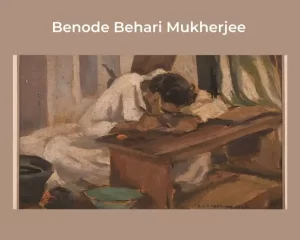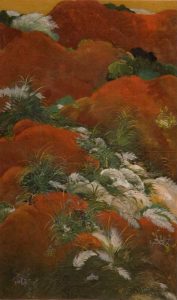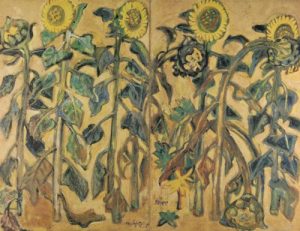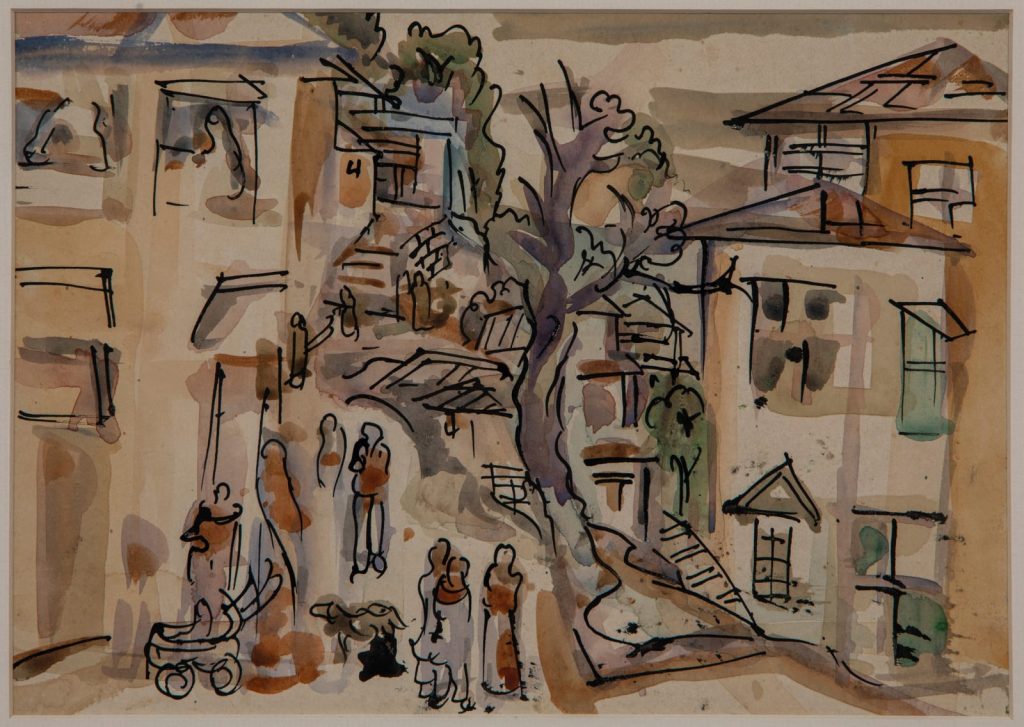Abhishek Kumar
February 07, ON THIS DAY
“A man who has the power of sight need not be told what light is. And where there is light there is colour.”
Benode Behari Mukherjee
Benode Behari Mukherjee was an Indian painter and muralist who was one of the pioneers of the Bengal School of Art, which was an early Indian modernist movement. He was also a teacher at Kala Bhavana, the art school of Visva-Bharati University in Santiniketan, India. Mukherjee was known for his murals and frescoes that combined traditional Indian techniques with modern styles and motifs. His works are considered important examples of early Indian modernist art. Today, his works are considered important examples of early Indian modernist art and his legacy continues to influence artists in India and around the world.

Benode Behari Mukherjee was born in 1904 in Kolkata, India and grew up in a family with a strong artistic tradition. He was influenced by the reforms of Rabindranath Tagore, who believed that Indian artists should embrace the country’s cultural heritage while incorporating modern techniques and ideas. Mukherjee studied at Kala Bhavana, where he was taught by Nandalal Bose, another important figure in the Bengal School of Art.
Mukherjee’s early works were heavily influenced by European modernist styles, such as Cubism and Futurism, but he later developed his own style that combined Indian motifs and techniques with Western abstract elements. His murals and frescoes, which can be seen in various institutions and public spaces in India, are notable for their bold use of color and geometric shapes.
Benode Behari Mukherjee’s works are known for their unique blend of traditional Indian art forms and modernist techniques. His murals and frescoes often feature geometric shapes, bright colors, and stylized depictions of nature and human figures. He also incorporated elements of Indian folk art, such as Pattachitra and Warli paintings, into his works.

One of his most famous works is a mural in the Rabindra Bhavan at Santiniketan, which he painted in 1942. The mural is a large, stylized representation of the tree of life, with branches and roots stretching out to fill the entire wall. The work is notable for its bold use of color and abstract form, and is considered a masterpiece of Indian modernist art.
In addition to his murals, Mukherjee was also a prolific painter and printmaker. His paintings often feature similar themes and motifs as his murals, with a focus on nature, Indian mythology, and the human form. His prints, on the other hand, are known for their playful use of line and color, and are considered some of the finest examples of Indian modernist printmaking.
Benode Behari Mukherjee’s influence extends beyond the realm of art and into the broader cultural and social spheres. In addition to his work as an artist and teacher, Mukherjee was also a passionate advocate for Indian cultural identity and independence. He believed that Indian artists should look to their own cultural heritage for inspiration, rather than blindly copying Western styles and techniques.

Through his teaching and his art, Mukherjee encouraged young artists to embrace their Indian heritage and to create works that reflected their own cultural experiences and perspectives. His focus on traditional Indian techniques and motifs helped to revive interest in these elements of Indian art and paved the way for a new generation of artists who sought to express their own cultural identity through their work.
Mukherjee’s work and teachings have had a lasting impact on the Indian art world and on Indian culture more broadly. Today, he is remembered as one of the pioneers of Indian modernist art and as an important figure in the development of Indian cultural identity. His works can be found in museums and galleries around the world and continue to be celebrated for their unique blend of traditional Indian elements and modernist styles.






